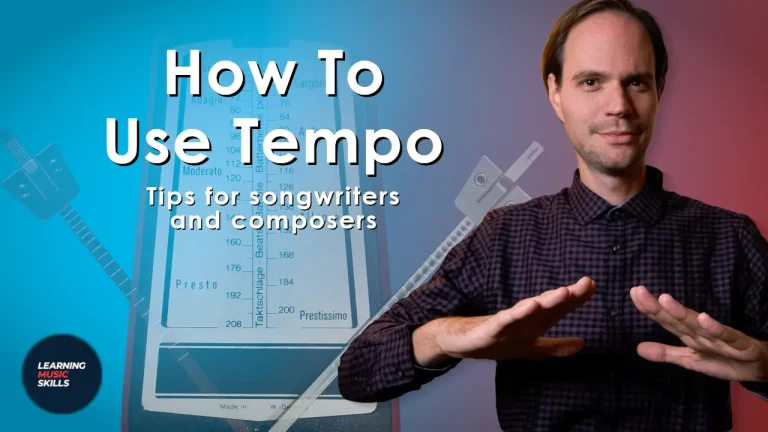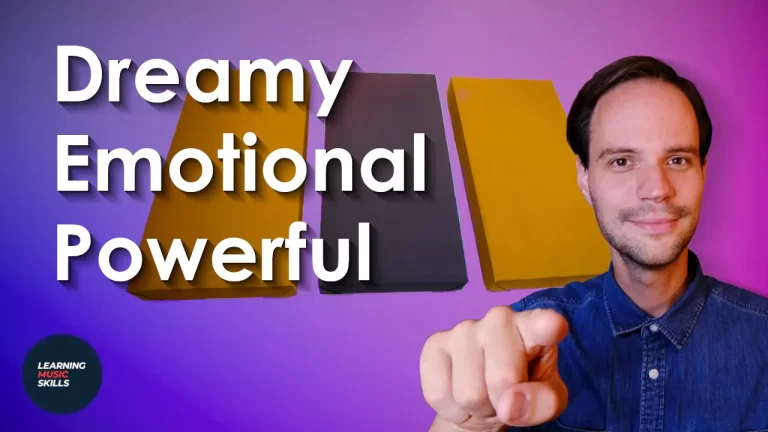How to use tempo for better songwriting and composing. This is an often forgotten question. Not only by composers and songwriters but also by many musicians. It’s easy to forget about it. Because it’s not as interesting as harmony, melody or orchestration. Right? Let’s dive in and let’s get creative!

Ok, tempo is not that sexy of a
What you will learn in this lesson about musical tempo is:
- When a fast tempo is better (how a too slow tempo affects your
music ) - When a slow tempo can give you more musical options
Video Lesson: The Secret Behind Your Music ‘s Tempo
I advise you to play and experiment with the tempo examples in this article. When you play them you hear and feel things differently. But maybe you don’t have an instrument lying around or you cannot play right now. If you want to hear real
When a Fast Tempo In Music Is Better
A fast tempo in
But it’s not only the playing that is under the influence of the tempo. Also, the character of your song or composition can change when you choose the wrong tempo. The example below is supposed to be played in tempo Vivace. Tempo vivace would be between 155 and 175 bmp. The musical character is supposed to be lively and light.

No play this chord progression example again. But instead of tempo vivace you choose tempo moderato. The bpm of moderato tempo is between 105 and 120 beats per minute.
Now tell me, how does it feel and sound? The musical character has changed because of the slow tempo right? It’s difficult to play this example with the same light and lively articulation. To me, this change of tempo makes the
When a Slow Tempo Gives More Musical Options
A fast tempo in

To me, this chord progression sounds boring and overused. Especially when you play it in a middle-of-the-road tempo. So there are two options. Speed it up or slow it down. But since this chord progression is boring, I want to add things. And in general, adding things is easier when you slow the tempo down.
Play the chord progression again but now in tempo largo. Tempo largo is between 40 and 60 bpm and should be played slow and broad. Now you have all this space to fill up. Isn’t that fantastic? I took advantage of this largo tempo and added some long and spacious vocal lines. These would have not been possible in our old moderato tempo. Check it out.
Your audience or listeners can take the time and listen to every detail. Isn’t that great?
Conclusion and Summary
With this article or lesson about how to use tempo in
Whenever you’re stuck writing or performing a piece try to change the tempo. Often it will sound completely different. Not only does the
The tempo of your






